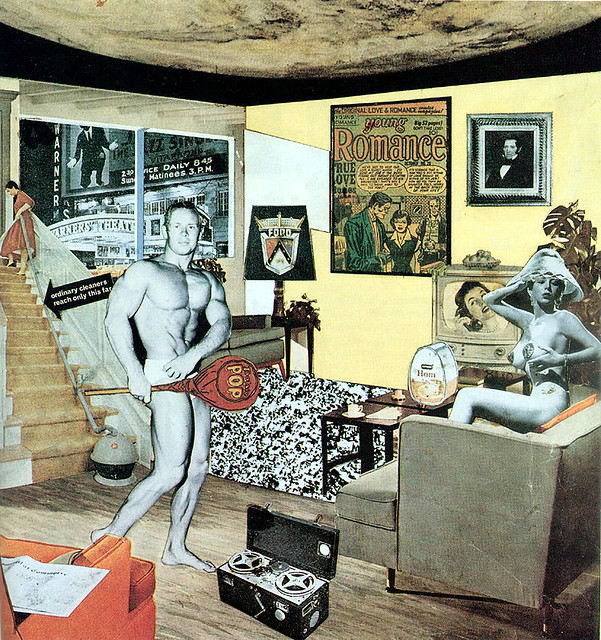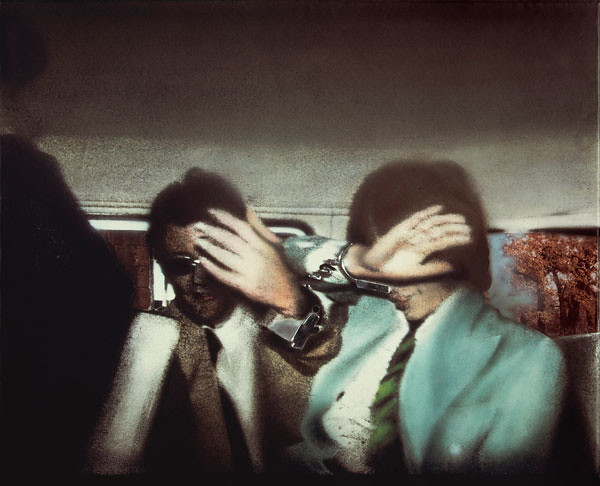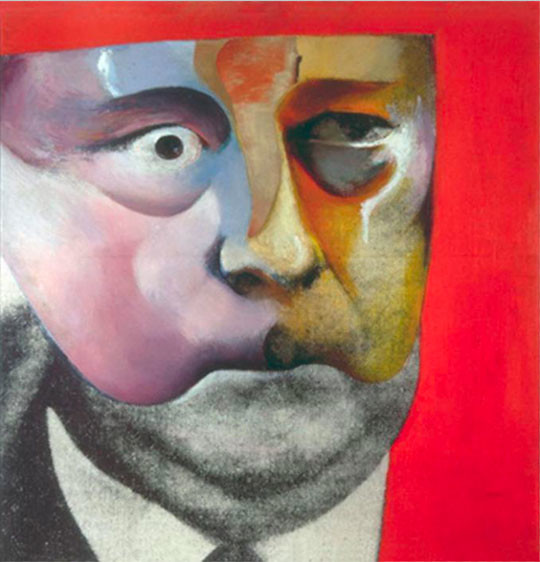
JUST WHAT IS IT THAT MAKES TODAY’S HOMES SO DIFFERENT, SO APPEALING? 1956

SWINGEING LONDON 67, 1967-68
The British artist Richard Hamilton, who died last week aged 89, was destined to go down in the annals of art history as the “father of Pop Art.” It was an epithet that he wore lightly, once claiming in an interview that: “I don't think I'm particularly proud of it but I am willing to accept that I do feel some responsibility” for this revolutionary aesthetic shift towards the popular, transient, expendable, mass produced, young, witty, sexy, gimmicky, glamorous and big business.
His most famous image - Just What Is It that Makes Today's Homes So Different, So Appealing? - was produced in 1956, as post-war Britain entered a boom era of mass production and consumption on a scale previously unseen. It is a dense and urgent homage to consumerism, sex, modern aspirations and classic glamour, which does not so much blend high and low, new and old cultural forms, as pile them on top of one-another, slap-dash, to effect a jarring, iconoclastic disintegration of cultural hierarchies. Hamilton, like his long-time friend and mentor Duchamp, was concerned with asking the big questions about art (sometimes seriously, reflexively; at other times sardonically, with an irreverent wink). What is it? Where is it? Who is the artist? Who decides? All are questions that continue to inform and motivate art production and criticism today.
He was also one of the first artists (along with Warhol, whose work in many ways he pre-figured) to understand the increasing importance of media images in defining historical moments and in producing our sense of the world. His iconic reproduction of a photograph of Mick Jagger and the art dealer Richard Fraser handcuffed in the back of a police car (Swingeing London 67) will continue to define sixties London for decades after the final Rolling Stones farewell tour. In Hamilton’s image, there is something about the smudged, bubblegum blue of Jagger’s jacket against the muted interior of the police car that captures the insouciance of the era in a way that the original black and white photograph cannot. But in reproducing the photograph, he immortalizes not only the event but also the photographic medium itself, giving testimony to the power of the camera to make visible, to make real, even if where the stories themselves are as blurred and indeterminate as the stripes on Jagger’s tie.
Unlike Warhol, much of Hamilton’s work was overtly political. In a 1964 image, Hugh Gaistkell, the Labour leader denounced by many on the left for reversing the party’s position on unilateral nuclear disarmament, is portrayed as a shadowy, beady-eyed phantom of the opera. It is a suggestive collision of media and significations, which hovers in the ambiguous hinterland between realism and the monster-making tendencies of the collective imagination; between the farcical and the blood-soaked. However later efforts, such as a post-Iraq Tony Blair depicted as a gun-toting cowboy, (Shock and Awe, 2007, after Warhol’s famous Elvis image) seem more straightforwardly didactic in their message and left his 2010 retrospective at the Serpentine Gallery (London) open to charges of facile politicism.
Whether or not you subscribe to this assertion, few would disagree with Tate director Nicholas Serota’s description of Hamilton as "one of the most influential and distinctive artists of the postwar period." His ever-engaging contributions to the British art scene, both artistic and intellectual, shall be missed.

PORTRAIT OF HUGH GAITSKELL AS A FAMOUS MONSTER OF FILM LAND, 1964
To listen to a great interview between Richard Hamilton and John Tusa in which he talks about the works “Just What Is It that Makes Today's Homes So Different, So Appealing?” and “Portrait of Hugh Gaitskell as a Famous Monster of Film Land”, as well as his project to illustrate James Joyce’s Ulysses, click here
See a short documentary featuring Bryan Ferry (who studied under Hamilton whilst he was teaching at Newcastle University) here
